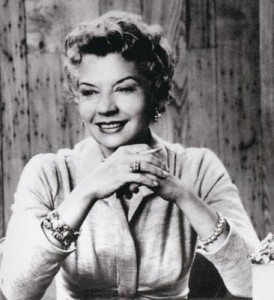He once invented a fish-powered boat.
But not surprisingly, it didn’t catch on (no pun intended).
The idea for the invention he’s known for today came from a paint can.
The way the grooved lid created a tight seal that kept the air out and the paint in.
In 1945, he turned his idea into a unique, innovative, and much-needed product when he invented the Wonder Bowl and what was to become known as the “Tupper Seal.”
His name was Earl Tupper.
And the product line he invented came to be known around the United States (and the world) as Tupperware.
But that’s only half the story.
If Earl Tupper were alive today, my guess is he’d like you to stop reading this right now.
Because what I’m about to tell you, he wouldn’t want you to know.
But even if you did, you’ll still hear about the person this story revolves around in a big way in the next two years or so (more about this in a minute.)
Her name was Brownie Wise.
She started as a sales representative for Stanley Products. Stanley Products sold brushes, vacuums, pots, pans and cleaning products, etc. However, they didn’t sell them through retail chains. They did it through “home party selling” – having prospects invite friends and family into their homes and then demonstrating the various products to them.
Brownie was good at it. She soon became a manager.
In 1948, after hearing about Tupperware from another Stanley star salesman, 18-year-old Gary McDonald, Brownie and McDonald decided to resign from Stanley and start selling Tupperware using the same home party selling methods.
Both Wise and McDonald agreed, Tupperware was a great product, but it needed to be demonstrated to really appreciate the benefits it offered.
In 1951, Brownie’s Tupperware order was late so she called up the Tupperware Plastics Company which was located in South Grafton, Massachusetts. She asked to speak to Earl Tupper. After talking about her order situation, she told Tupper he could improve his business if he stopped selling his product through retail channels and only sold his product through home parties. Tupper was well aware of who Brownie was. She and McDonald consistently sold more Tupperware products than his main retail channel the J.L Hudson Department store. He agreed with Brownie’s recommendation.
Tupperware Home Party Inc. was created with Brownie in charge.
Brownie then convinced Tupper to buy one thousand acres in Florida which she soon transformed into a monument of salesmanship.
Brownie’s business credo was “If we build the people, they’ll build the business.” And that’s just what she did.
In 1954, she held the first Tupperware Jubilee in Florida, motivating and inspiring Tupperware salespeople, regional managers, and distributors across the United States.
Her enthusiasm for her people and her marketing ingenuity motivated thousands of women to join her team and thousands more to open up their homes to a Tupperware party (or two.) This was at a time when women were more or less expected to stay home and raise the children.
During that time Brownie became the first woman to be featured on the cover of Businessweek when they named her Business Woman of the Year.
In 1951, Tupper Home Party Inc. had eight couples in the role of distributor. In 1956 they had 100 couples. Being a distributor was the highest level in the Tupperware sales system. Many of them made millions of dollars.
Through it all, Brownie had become the face of Tupperware. She’d become a mini-celebrity of her day. When people thought of Tupperware they thought of Brownie Wise. Meanwhile, Earl Tupper chose not to attend even one of Brownie’s Florida Tupperware Jubilees.
In 1957 Brownie’s Home Party division was selling more than Earl Tupper’s manufacturing division could produce.
This, along with other things, created tension between them.
“The manufacturer isn’t in business for the sales department,” Earl Tupper told her.
Brownie (rightfully) disagreed.
Communication became more strained when he questioned her purchasing 6,000 copies of her book Best Wishes in the company’s name for promotional purposes.
Companies approached Tupper to buy his company, but he figured he couldn’t sell it with a woman in charge – one who held so much power over the organization.
On January 28th, 1958, Tupper flew to Florida and fired Brownie.
Upon being fired Brownie said the following to Tupperware PR Director Charlie McBurney…
“I’m fired. There goes my life. I’m through with life.”
She had no contract. No stock in the company. Earl Tupper didn’t want to give her anything. When pushed by Gary McDonald, Tupper came up with $35,000 as severance pay.
Tupper stripped Brownie’s name from the Tupperware Head Office. It was like she never existed. He even dug a hole and buried the remaining 600 or so copies of Browne’s Best Wishes book.
Soon after firing Brownie, Tupper sold his company to Dart Industries for $16 million dollars. He bought an island off the coast of Costa Rica and retired there. Earl Tupper passed away on October 5th, 1983.
Brownie started her own company, Cinderella Cosmetics, but it folded after a year. With few close non-Tupperware-related friends (Tupperware had become her whole life) she withdrew and lived in relative obscurity until her death on September 24th, 1992 at the age of 79.
Today, Brownie remains one of the great unsung heroes of American business. She’s also one of its victims. First and foremost, she was betrayed by the man whose fortune she helped build. And to a lesser extent, perhaps you could say she was betrayed by her own ego. She came to believe that when it came to Tupperware Home Party Inc. she was irreplaceable.
And, of course, no one is irreplaceable in any business… especially if that person doesn’t have a contract.
Will Brownie always be an “unsung hero?”
It appears she will soon get the spotlight shown (and hopefully the recognition she deserves) in the upcoming 2016 movie Brownie Wise starring Sandra Bullock.


